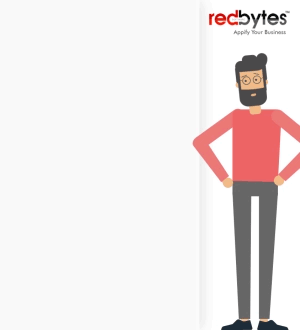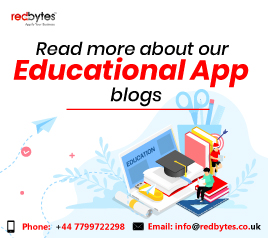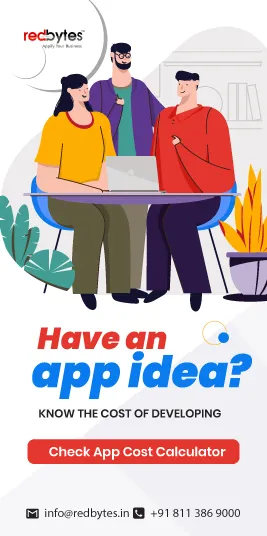What is Mobile App Marketing Funnel?
Mobile App Marketing Funnel is a model that breaks down the stages of the customer journey. It starts with general awareness and ends with leads that converting prospects into customers.
One of the most critical and complicated of all business funnels, Mobile app marketing funnel involves a lot many considerations and strategic challenges.
From their very discovery, onboarding process to final conversion and even beyond, customer acquisition funnels have users move through multiple stages and channels.
Your close examination and analysis of user journey through these funnels lead you to a better position in conversion tactics.
In this blog, we are going to understand 5 major phases of app marketing funnel and what tactics have potential enough to yield returning and loyal converted customers.

The role of Mobile app marketing funnel
A little different from traditional marketing, most tactics used to propel customers through acquisition funnel are unique in its scope and effect.
The funnel for app marketing helps in the following parameters:
- Discover friction points and business challenges
- Areas of strengths and weakness
- Target areas with great Impact on business growth
- Customer retention solutions
- Strong methods of customer interactions
- Drop off, retention and conversion points
- Realization of user-friendly engagement/support channels
- Discovery of action plan
- Key spots of investment
Read Also: Effective Post launch App Strategies That can Drive Success
Different stages in mobile app marketing funnel
1. Discovery and Awareness Phase

Discovery phase in mobile apps is more crucial than traditional desktop exposure or typical enterprise sales. Here early stages where most purchase decisions are made consists of time taken to download an app.
In mobile app marketing funnel, the purchase or sales time which is nearly equivalent to time to download an app is relatively less.
The discovery and awareness stage is mostly dedicated to getting the product discovered by potential users and driving much awareness around it despite thousands of similar apps in the market.
Hence, the stage requires you to adopt effective app discovery tactics, both organic and paid.
(i) Organic approach
Many of mobile app marketing tactics resemble traditional marketing funnel such as social media exposure, word of mouth, email marketing, influencer or affiliate marketing, partner blogs and forums, etc.
(a) Word of Mouth
One of the ancient form of marketing, WOM type of marketing is still seen as effective in modern marketing funnel. WOM is all about how easily users can share with others, which is made possible by creating reward and referral programs in place.
Many food delivery and ride sharing apps leverage the idea of making it easy for existing customers to share and refer the app to their friends and folks. The tactic eventually drives good WOM marketing and referrals.
(b) App Store Optimization (ASO)
More like mobile app SEO, ASO is the must-have process of App store optimization that ensures your mobile app is optimized to rank top in app store when users come searching for it.
Since ASO accounts for 48% of app discovery, the need for ASO is high.For ASO success, make sure you use right target keywords in app name and description, and design an appealing icon,earn more user ratings and introduce frequent updates.
(c) Social media
Social media is undoubtedly the best tactic to create scores of fans for your app who will vote for you. Go and promote your new mobile app on social pages like Facebook, Twitter, Instagram, etc.
Twitter’s App Cards has people actually downloading the app directly from its page. Find out such healthy ways to connect and engage with active social media audience.
(d) Forums and Q&A sites like Quora and Reddit
Whether it is an app for shopping, meditation, e-sports, productivity or anything else, they all have a thriving community and target customers. It is important to find and reach out to them on channels and platforms they frequently visit such as hot famous Quora and Reddit. Follow their community guidelines and standard practices to achieve best gains on these interactive platforms.
(ii) Paid marketing tactics
Here are a few paid customer acquisition tactics to learn:
(a) App install and retargeting messages
To encourage more app installs, you can capitalize on your app’s in-built referral system. Use the referral links to create ads for retargeting referrals with a message. This way you will have a chance to convert and acquire new customers with existing ones.
Another app install driver is populating ads via social platforms like Facebook, AdWords, YouTube, Twitter, Instagram etc. These widely used networks help drive downloads and grab more attention.
This also works for Google Play store, where upon searching with a keyword, people get to see a list of apps along with paid advertisements of apps. In many cases, this tactic is more effective than organic results especially when you are new in the market.
(b) Affiliate marketing
Most popular these days, Affiliate marketing works like a referral system though other apps here feature your app to their existing users. The featured ad widgets, pages and snippets created by marketers is embedded by other app and web publishers (affiliates) on their platforms.
The app marketers have to pay a small fee to affiliates for such cross-promotion service which is more beneficial when you have multiple apps.
2. Consideration

Before downloading and after discovering your app, the first instinct is to check ratings, images and description or a supporting video on the app page in app stores.
This is called consideration process where trust plays a major role to drive app installs. This is where your app proves whether or not it is worth downloading by means of proof visible to curious souls.
Ratings are especially important if you spend good bucks on paid marketing tactic as many ads show ratings. The app with 4 or 4+ stars emit positive signals and bring more organic downloads as opposed to 2-3 star apps that don’t impress.
(i) Organic strategies
For good consideration, try to build trust for your presence on various marketing channels including emails, social space, website,etc. Here is what you can do for app store consideration:
(a) App page
Put the top quotes and positive reviews on the top space of the app page. You can also take advantage of placing a promotional video that shows the ins and outs of your app and the experience downloaders can expect.
(b) App ratings and reviews
Your app page is only well-optimized when there are considerable app ratings and reviews. As spoken earlier, every penny spent on paid marketing efforts will be worth it when your app shines with 4+ ratings.
You may use a smart rating prompt tool that helps boost reviews and ratings by reminding satisfied customers to leave review about their experience with the app.
3. Conversion and Acquisition

Conversion starts as soon as the installation happens and varies from product to product. If it is a retail app, remember that users never follow a straight line in their journey.
Some browse for new products while others are interested in specific items or special offers for new joiners. For some apps, conversion is in-app subscription or purchases while it is merely account creation for others.
Some users decide instantly to create an account while others spend sessions before creating the account. Mull over all the ways you can lead users to a conversion point.
(i) Conversion Tactics
We suggest you should define the exact conversion metrics of your business and target spots you wish to hit before starting off with these conversion tactics:
(a) Smooth Onboarding
Smooth, fluid onboarding process is what customers expect and what boosts conversion. Get them started with your app and help them familiarize with your in-app environment.

Make sure the road between install and app usage is made effortless and simple for users to get accustomed to the app quickly. This is because onboarding is directly associated with their first experience.
b) UX design craft
The number of people quitting your app due to poorly designed interface and shoddy registration page is more than 40%. This suggests first impression is a key driver of conversion.
This is why marketers need to work together with UI developers to design a user-optimized intuitive interface that delivers flawless interaction. Fusion of marketers and engineers leads to more returning converted customers.
Read Also: Importance of MVP in mobile app development
4. Customer Relationship

Building a customer relationship saves a lot of efforts and dollars spent on customer acquisition and retention activities. Develop a good relationship with them using the services that add value.
Marketers should follow the etiquette of physical retailers who engage with their buyers in store. While connecting with mobile app customers, choosing the right moment to spark off communication is the key to developing healthy relationships.
Steer clear from forcing yourself on customers when you approach them. Go with the flow, remain natural, read clues and reach out when you think they need you.
(i) Viable tactics
Think about how this approach to building customer relationships can translate to your mobile app experience by following these tactics:
(a) The right-moment communication
Communication with customers must happen at a right time and in a way that doesn’t bother them. You can choose to connect with in-app users when they are stuck somewhere, frustrated or had a great experience.
Encourage feedback and respond to them since good customer support, proactive resolution and product satisfaction translate to a lasting customer relationship.
Mobile offers a convenient platform for a brand to initiate communication and be accessible to customers in the nick of time. Leverage special feedback features to create a strong response system.
(b) Element of Personalization
Personalization is the one tactic that is never out of the game. Prepare viable one-to-one personalized messages that incorporate all of customers’ likes, tastes, preferences and tendencies.
Use customer data and try to be as close to customer’s personality as possible to achieve deep personalization and deliver addictive in-app customer experience.
5.Customer Retention

Customer acquisition and replacement cost is quite higher than retention and engagement activities. Mobile apps that constantly stay in touch with their customers have better chance at retaining customers after installing the app.
Engaging customers involves building relationships, listening to their feedback, giving responses and delivering great experience. Customers are most likely to remain loyal when companies respond to their feedback.
Also as you implement their feedback to improve your app service, they feel like being a part of the process – which further translates to more loyalty.
(i) Retention tactics
New offers, feedback, special moments and app updates encourage customers to stick to your app and keep using it.
(a) Engaging content
Make a practice of frequently updating in-app content with fresh perspective as it keeps customers engaged and loyal to your app. You can think of adding dynamic catalogue or special offers banners, new features or fun facts associated with your products.
Offer something fresh and unseen so that every time they open your app, they will be surprised and retained more often.
(b) Push notifications
Unlike in-app messages, push notifications appear outside the app on a customer’s device as alerts or messages when they are not interacting with your app. These notifications help foster good desire in customers to go use your app again for a reason and drive retention.
(c) Loyalty and reward bonus
If nothing else seems to work, Loyalty bonus or reward programs are the best way to retain lost customers or infrequent customers who are less active.
You can customize your own mobile-exclusive reward loyalty program that boosts engagement and brand loyalty. For instance, make them purchase on specific occasion and promise a reward in return as soon as they hit a milestone.
Read Also: How to reduce the mobile app development cost
Final words
We hope you could learn and collect some insight from our attempt to explain ideal mobile app marketing funnel strategy to convert users into customers. You can work on these tactics, discuss with your marketing team and implement them to smoothen user journey.

When executed perfectly, the precise visualization of customer acquisition funnel leads you to exact target business metrics and a bright opportunity to achieve improved customer retention, conversion and loyalty while reducing drop off number.
















